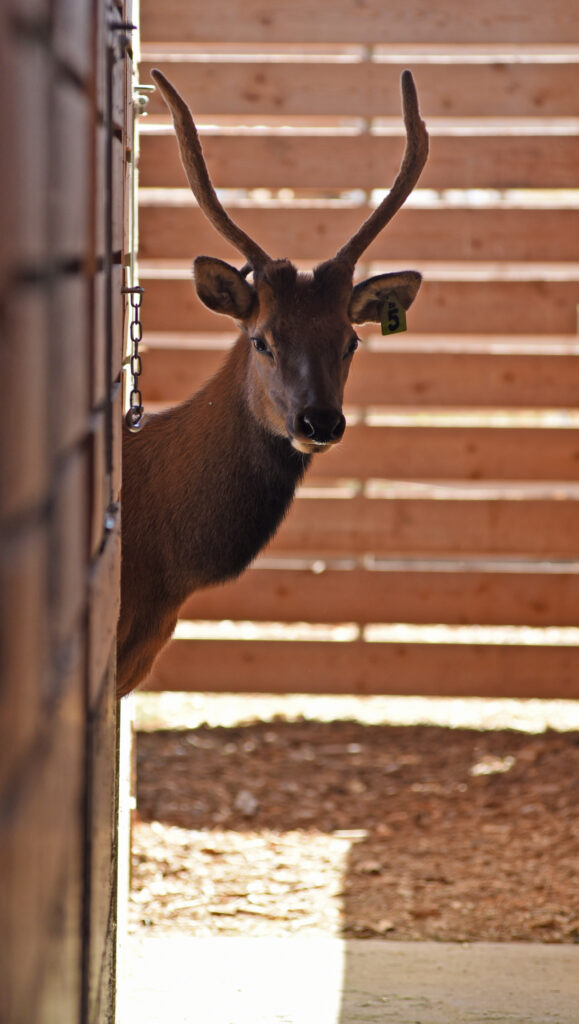
WSU Researchers Say They’ve Found One Way Elk Can Catch Hoof Disease
Researchers at Washington State University believe they’ve found at least one way that elk are catching the crippling hoof disease now found in all but two of the state’s herds.
“Our preliminary results indicate that TAHD can be transmitted to otherwise healthy elk through exposure to soil contaminated with hooves from affected elk,” said Professor Margaret Wild in a press release out today.

TAHD stands for Treponeme-associated hoof disease and its become increasingly common in Washington elk since the early 2000s and is now also found in Oregon, Idaho and California.
It makes it difficult for the animals to walk around, contributing to poorer and poorer health.
It’s unclear how Northwest elk came to be infected with TAHD, but it follows on a rise in digital dermatitis in dairies, first in Europe and then North America.
“It is still unknown if other factors, such as an elk’s nutritional condition or exposure to chemicals, promotes the disease, but our findings show the infection can occur without these added insults,” Wild added.
Her lab did an experiment involving six elk calves that were captured in Central Washington and kept in separate stalls. A quarter of each of their enclosures was floored with soil collected from the Mt. St. Helens area where herbicides – which some suspect is linked to the disease – weren’t sprayed.
State and tribal biologists then provided TAHD-infected hooves to the lab and researchers exposed four of the six elk to them in two different ways – mincing them and mixing with the soil and placing the mix between the animals’ hooves to ensure contact – every two to four weeks over a six-month period.
The other two elk served as controls; hooves from healthy elk were used in their soil mixture.
Lesions began to show up on the four treated elk after a couple months and after four months the quartet had all developed “moderate grade infections that were indistinguishable from those found in wild elk,” WSU reported.
The university said a veterinary pathologist “confirmed all indeed had TAHD,” while the two control animals “suffered no visible or microscopic evidence of TAHD.”
The infected elk were euthanized in line with federal, state and university policies.
Researchers now want to sequence DNA to figure out all of the bacteria from the infected hooves.
Dr. Wild termed that a “technically challenging task, but such a finding would lend further support for the soil as at least a short-term reservoir of disease-causing bacteria. We are also currently testing more natural means of transmission through soil in the pen without our applying contaminated soil directly to the elk’s feet.”
As concern about the disease rose several years ago, Washington lawmakers assigned WSU the task of figuring out what’s causing the disease and what to do about it. Next Thursday evening at 6:30 on Zoom, Wild will provide an update on the research.
She will also be joined by WDFW’s Kyle Garrison, who will provide a status update on Washington ungulates.
Earlier today Garrison told me that TAHD is now found in all of the state’s herds except Colockum and Selkirk and is in 17 of the state’s 39 counties.
To potentially reduce its prevalence, this fall WDFW is beginning an incentive program in which hunters who kill an elk with TAHD could win some pretty sweet permits to pursue Western Washington bulls from September through December with whatever weapon they choose.
To participate, hunters need to turn in the hooves of elk suspected of having the disease. Testing will confirm that, and if results are positive, the hunter’s name will go into a draw for the tags.
It’s a test to evaluate whether hunters can help reduce occurrence of the disease in the wild, said Garrison. Cutting the number of infected elk that are apparently giving it to healthy ones will interrupt transmission to a degree.
Garrison said that eradicating TAHD was impossible in the near term, but believes that cutting into its prevalence is possible.
WDFW says the disease only affects the hooves, not the meat.
But it does impact the body condition of infected elk, decreasing their ability to forage enough to build up fat reserves and make it through winter, in turn impacting pregnancies in cows and their calves.
